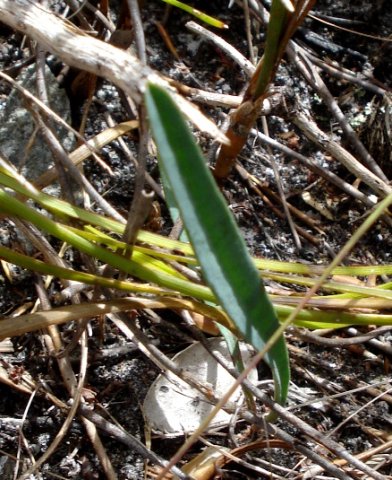Euphorbia silenifolia lonely leaf?

The narrow leaves of Euphorbia silenifolia are oblanceolate or nearly oblong in shape and blue-green in colour. They have longitudinal central folds and may be borne nearly flat on the ground to almost erectly. Leaf surfaces are hairless and the margins either smooth and green as on the plant in picture or raggedly toothed and sometimes red. Leaves reach lengths varying from 5 cm to 15 cm.
The specific epithet, silenifolia, refers to plants of the Silene genus in the Caryophyllaceae family. The Latin for leaf is folium, suggesting a resemblance. A common name of silene-leaved milkroot was bound to follow.
The often chaotic tangle of leaves of a mature plant of this species sometimes resembles a rosette, more like a tuft or a cluster of tufts growing from multiple caudex tips. A single leaf (plus a tiny emerging one just behind), was all that this underground caudex had produced by October on a plant in the Fernkloof fynbos, fairly high up on a slope.
Note the pale purple blotches on the leaf surface.
Damaged plant parts exude a milky latex as can be expected from a Euphorbia (Vlok and Schutte-Vlok, 2010; Bean and Johns, 2005; Andrew, 2012; www.bihrmann.com; www.llifle.com).

